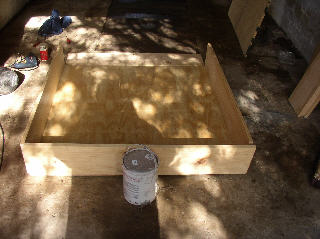The wood was delivered today, well part of it. Some of it needs to be collected in the next few days. What am I using to build each square foot garden?
a) 4 pieces of 22x220x1.2m planks for the sides of the box
b) 1 piece of 1220x1220 shutterply for the base of the box
c) 4 pices of 32x32x300 planks for the corners of the box
d) however many decking screws required - they come in bags of 50.
I bought enough for two gardens. The next activities are as follows:
a) Mark the positions for screws
b) Drill the holes, both for the screws and for drainage
c) Screw the screws
d) Paint with an undercoat
e) Cover with a membrane
f) Second coat the undercoat
g) Paint with an attractive top coat
h) Let the boxes dry and air for a while
i) Position the demarcation lines to divide the box into 30cm sections
i) Line the boxes with Landscaping Frabric
j) Fill the boxes with Mel's mix
k) Plant the seeds
These will be my activities for the next few weeks. I figure it is going to be fun. Hope you join me by following the progress.

















































